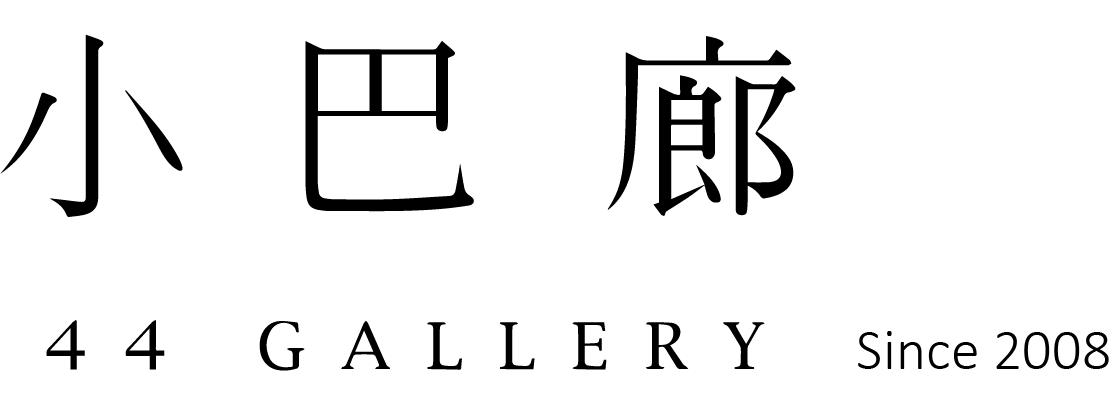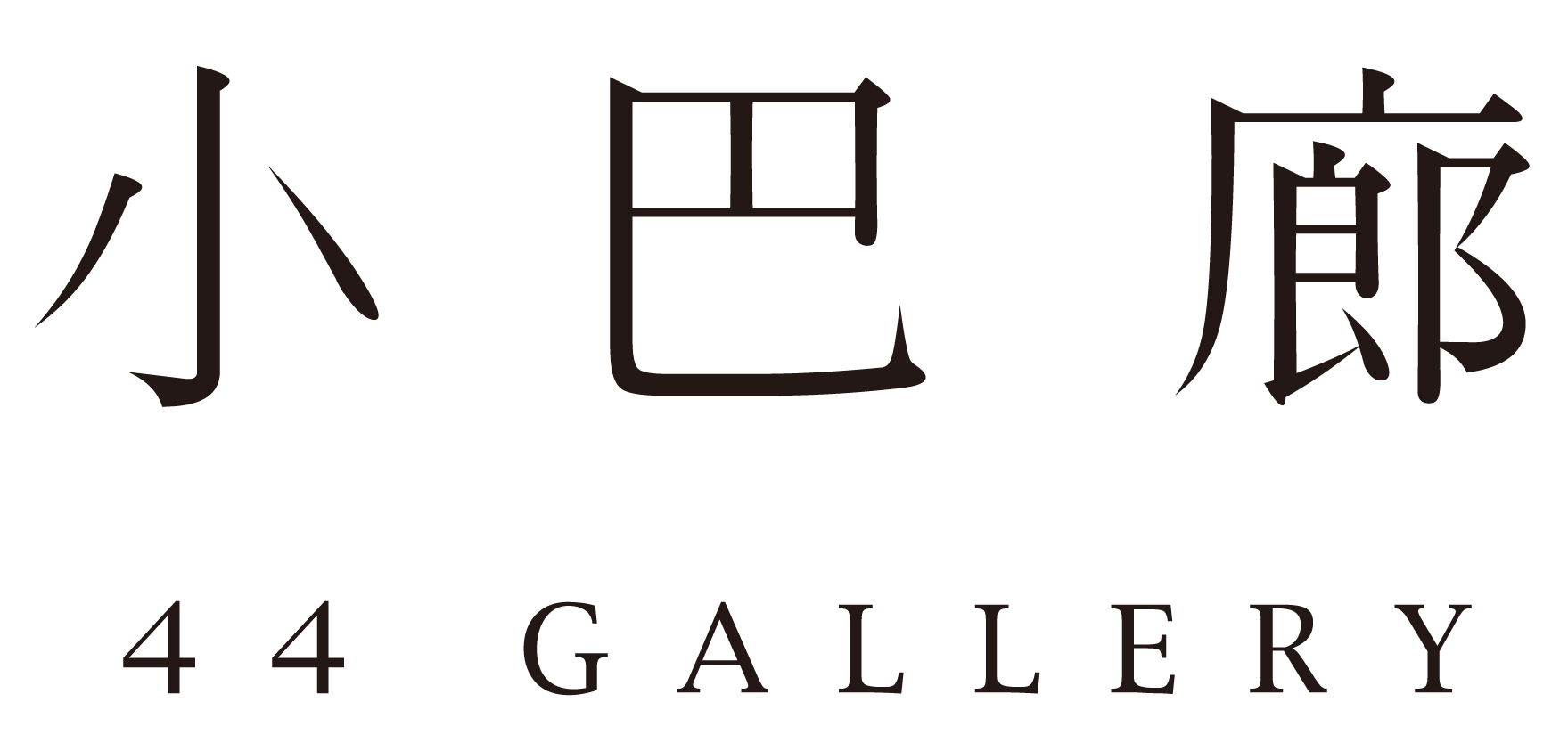『 來 自 土 堆 - From Soil 』
2017.7.8 - 8.12
處於20世紀的藝術大師,畢卡索.布朗庫西.馬諦斯等..受到部落藝術的啟發,在作品中轉化為另一種的可能…
處於2017年的當代藝術家 吳佩珊透過自然與人為建築的關係,又會以什麼樣的創作來詮釋她心目中的美好園地呢?
吳佩珊
擁擠的都市景觀對於我個人來說相當不適應,高樓大廈密集的排列、狹小而水洩不通的道路、打開窗看見的是周圍鄰居的鐵門鐵窗、抬頭看見的是被許多高聳建築包圍的一片小小天空,視線中處處充滿著灰暗的色彩。我認為,在城市中生活,建築物除了提供我們居住空間,卻也帶給我們視覺無形的壓迫感。這樣的情況讓我開始去思考建築的本質是什麼?如何改善建築物的造型外觀,在不改變其功能之下亦不對人們的視覺造成壓迫?人為的建築物和大自然的良好平衡關係應該又是如何?以上問題為我的創作主要發想。
當我進入新的環境最先注意到的,是各式各樣連結空間與人們的建築物。我認為建築的外觀應該要打破單一制式化或是單純用水平線及直線所構成的造型,應該是要更自由和具有創造力,才能使其空間使用者及觀看者感到愉悅自在。
我使用洞穴建築做為創作的主要造型,在部落的建築中也可以看到洞穴建築的特徵,例如小小的門窗、使用自然材料等等。從洞穴建築中可以看出人類的祖先對大自然的尊重及敬畏之心,用最避免破壞整體環境的方式來建設自身居住所需,和平且謙虛地與大自然共處,並且建造出在現代人眼中也十分驚嘆的洞穴建築。
洞穴的隱閉居住環境帶給我們的祖先安全感,避免史前人類受到猛獸的攻擊、颳風下雨、閃電等等自然因素所造成的生活不便及人身上的傷害,這樣關於洞穴居住的記憶一直留存於人類的基因中影響著後代的我們,形成一種人類集體淺意識。回顧我們的兒時或是觀察現在周遭的小朋友,可以發現兒童常常對於有隱蔽性的空間有嚮往,例如帳篷、溜滑梯下的小空間、擁有小小的出入口可以讓兒童躲藏攀爬的遊樂設施、將棉被蓋住全身等等。這樣的空間在小孩心中扮演著秘密基地的角色,在秘密基地中盡情的與朋友玩樂聊天或是獨自看書、畫畫,不受到外界的干擾,我認為這種對於隱閉空間的嚮往是一種本能行為。
這次展覽中的作品都和建築及自然的有機造型相關,《twinkle》、《限時逃生口》及《很自然大廈》三件作品是以不鏽鋼為創作媒材,材質本身即是工業時代下的產物,而現代建築亦然。不同於一般將塑造鑄造成金屬作品,我將原本平職工整的不鏽鋼片經由焊接熔化為不規則的造型,類似使用塑造的手法去製造作品上的筆觸及肌理,造型上則是既像石又像山般的有機感,透過不鏽鋼本身形態上的轉變讓建築及自然景觀做連結。
作品《獨棟別墅》及《雙拼別墅》則是使用水泥為創作媒材,水泥為生活中最常見的建築材料,用人工的建築材料去模仿馬利部落的建築並且在上方種植植物,讓觀者想向居住其中的感受。
小巴廊
創立於2007年的小巴廊,致力推廣部落藝術和尋找與藝術對話的可能性。
小巴廊藉由不同主題的部落藝術展,來多面向的呈現這個藝術領域。
部落藝術( Tribal Art) 在亞洲是非常少見的領域,但在歐美國家卻已經成形有百年以上的歷史。
受到先前於北美館展出的《帕克特 x 藝術家─220件合作計畫》所啟發,期待透過藝術家合作的可能性,產生更多面向的藝術角度。
期待本次「來自土堆 」合作展,藝術家吳佩珊不受拘束般的建築雕塑與部落藝術作品共同呈現下,以透過自然與人為建築的關係中,彷彿將冰冷的建築,轉換為另一種自由奔放、溫暖樸實的氛圍。
In the 20th century, artists such as Picasso, Brâncuși, and Matisse found inspiration in tribal art, transforming its essence into new artistic expressions. Now, in 2017, contemporary artist Wu Pei-Shan explores another intersection—the relationship between nature and architecture, reconstructing an ideal landscape through her sculptures.
These inquiries became the foundation of her artistic exploration.
Her works are inspired by cave dwellings, which are also seen in tribal architecture—small doors and windows, natural materials, and structures that respect the environment. These ancient forms symbolize humanity’s deep-rooted connection with nature, reflecting an era when early humans built with humility and harmony.
Caves provided security, shielding early humans from predators, storms, and natural threats. This primal memory remains ingrained in our collective subconscious. Even today, children instinctively seek out enclosed spaces—whether hiding under blankets, playing inside tents, or crawling into playground tunnels. These secret spaces serve as personal sanctuaries, echoing an ancient desire for shelter and solitude.
In "From the Earth", Wu Pei-Shan’s free-spirited architectural sculptures merge with tribal art, transforming cold, industrial structures into warm, organic spaces. Through her work, architecture is no longer rigid but fluid, alive, and deeply human.
Her sculptures invite us to reimagine our relationship with space, nature, and shelter—asking whether the buildings we inhabit should confine us or set us free.
處於2017年的當代藝術家 吳佩珊透過自然與人為建築的關係,又會以什麼樣的創作來詮釋她心目中的美好園地呢?
吳佩珊
擁擠的都市景觀對於我個人來說相當不適應,高樓大廈密集的排列、狹小而水洩不通的道路、打開窗看見的是周圍鄰居的鐵門鐵窗、抬頭看見的是被許多高聳建築包圍的一片小小天空,視線中處處充滿著灰暗的色彩。我認為,在城市中生活,建築物除了提供我們居住空間,卻也帶給我們視覺無形的壓迫感。這樣的情況讓我開始去思考建築的本質是什麼?如何改善建築物的造型外觀,在不改變其功能之下亦不對人們的視覺造成壓迫?人為的建築物和大自然的良好平衡關係應該又是如何?以上問題為我的創作主要發想。
當我進入新的環境最先注意到的,是各式各樣連結空間與人們的建築物。我認為建築的外觀應該要打破單一制式化或是單純用水平線及直線所構成的造型,應該是要更自由和具有創造力,才能使其空間使用者及觀看者感到愉悅自在。
我使用洞穴建築做為創作的主要造型,在部落的建築中也可以看到洞穴建築的特徵,例如小小的門窗、使用自然材料等等。從洞穴建築中可以看出人類的祖先對大自然的尊重及敬畏之心,用最避免破壞整體環境的方式來建設自身居住所需,和平且謙虛地與大自然共處,並且建造出在現代人眼中也十分驚嘆的洞穴建築。
洞穴的隱閉居住環境帶給我們的祖先安全感,避免史前人類受到猛獸的攻擊、颳風下雨、閃電等等自然因素所造成的生活不便及人身上的傷害,這樣關於洞穴居住的記憶一直留存於人類的基因中影響著後代的我們,形成一種人類集體淺意識。回顧我們的兒時或是觀察現在周遭的小朋友,可以發現兒童常常對於有隱蔽性的空間有嚮往,例如帳篷、溜滑梯下的小空間、擁有小小的出入口可以讓兒童躲藏攀爬的遊樂設施、將棉被蓋住全身等等。這樣的空間在小孩心中扮演著秘密基地的角色,在秘密基地中盡情的與朋友玩樂聊天或是獨自看書、畫畫,不受到外界的干擾,我認為這種對於隱閉空間的嚮往是一種本能行為。
這次展覽中的作品都和建築及自然的有機造型相關,《twinkle》、《限時逃生口》及《很自然大廈》三件作品是以不鏽鋼為創作媒材,材質本身即是工業時代下的產物,而現代建築亦然。不同於一般將塑造鑄造成金屬作品,我將原本平職工整的不鏽鋼片經由焊接熔化為不規則的造型,類似使用塑造的手法去製造作品上的筆觸及肌理,造型上則是既像石又像山般的有機感,透過不鏽鋼本身形態上的轉變讓建築及自然景觀做連結。
作品《獨棟別墅》及《雙拼別墅》則是使用水泥為創作媒材,水泥為生活中最常見的建築材料,用人工的建築材料去模仿馬利部落的建築並且在上方種植植物,讓觀者想向居住其中的感受。
小巴廊
創立於2007年的小巴廊,致力推廣部落藝術和尋找與藝術對話的可能性。
小巴廊藉由不同主題的部落藝術展,來多面向的呈現這個藝術領域。
部落藝術( Tribal Art) 在亞洲是非常少見的領域,但在歐美國家卻已經成形有百年以上的歷史。
受到先前於北美館展出的《帕克特 x 藝術家─220件合作計畫》所啟發,期待透過藝術家合作的可能性,產生更多面向的藝術角度。
期待本次「來自土堆 」合作展,藝術家吳佩珊不受拘束般的建築雕塑與部落藝術作品共同呈現下,以透過自然與人為建築的關係中,彷彿將冰冷的建築,轉換為另一種自由奔放、溫暖樸實的氛圍。
In the 20th century, artists such as Picasso, Brâncuși, and Matisse found inspiration in tribal art, transforming its essence into new artistic expressions. Now, in 2017, contemporary artist Wu Pei-Shan explores another intersection—the relationship between nature and architecture, reconstructing an ideal landscape through her sculptures.
The Struggle Between Cityscapes and Organic Forms
Wu Pei-Shan has always felt uneasy within crowded urban environments—towering skyscrapers, tightly packed roads, and windows that reveal nothing but iron bars and gray facades. She sees modern architecture as not only a provider of shelter but also a source of visual oppression. This led her to question:- What is the true essence of architecture?
- How can buildings be designed to be functional yet visually harmonious?
- What is the ideal balance between human-made structures and nature?
These inquiries became the foundation of her artistic exploration.
The Inspiration of Cave Architecture & Human Instinct
When entering a new space, Wu Pei-Shan is first drawn to the buildings that connect people and environments. She believes architectural forms should break free from rigid lines and standardized designs, embracing creativity and fluidity to evoke a sense of joy and comfort.Her works are inspired by cave dwellings, which are also seen in tribal architecture—small doors and windows, natural materials, and structures that respect the environment. These ancient forms symbolize humanity’s deep-rooted connection with nature, reflecting an era when early humans built with humility and harmony.
Caves provided security, shielding early humans from predators, storms, and natural threats. This primal memory remains ingrained in our collective subconscious. Even today, children instinctively seek out enclosed spaces—whether hiding under blankets, playing inside tents, or crawling into playground tunnels. These secret spaces serve as personal sanctuaries, echoing an ancient desire for shelter and solitude.
Translating Concepts into Sculptural Forms
In the exhibition "From the Earth", Wu Pei-Shan’s sculptures blur the boundaries between architecture and organic landscapes:-
《Twinkle》,《限時逃生口》, and《很自然大廈》
- Made of stainless steel, a material symbolic of the industrial era and modern architecture.
- Instead of rigid metal casting, she melts and reshapes the steel, creating fluid, irregular textures that resemble rock formations and mountains.
- This transformation bridges architecture with natural landscapes, challenging the perception of cold, sterile structures.
-
《獨棟別墅》 and《雙拼別墅》
- Constructed with cement, the most common urban building material.
- Modeled after Malian tribal architecture, incorporating plant life on top—an artistic gesture that reclaims artificial structures through nature.
- Encourages viewers to imagine living within these earthy sanctuaries, offering an alternative to conventional cityscapes.
A Dialogue Between Tribal Art and Contemporary Sculpture
Founded in 2007, Xiao Bar Lang is dedicated to promoting tribal art and fostering artistic dialogues. Although tribal art remains niche in Asia, it has flourished in Western countries for over a century. Inspired by the Pacte x Artists exhibition at the Taipei Fine Arts Museum, this collaboration explores new artistic perspectives.In "From the Earth", Wu Pei-Shan’s free-spirited architectural sculptures merge with tribal art, transforming cold, industrial structures into warm, organic spaces. Through her work, architecture is no longer rigid but fluid, alive, and deeply human.
Her sculptures invite us to reimagine our relationship with space, nature, and shelter—asking whether the buildings we inhabit should confine us or set us free.
藝術家 吳佩珊
︎ PROFILE / ARTWORKS


